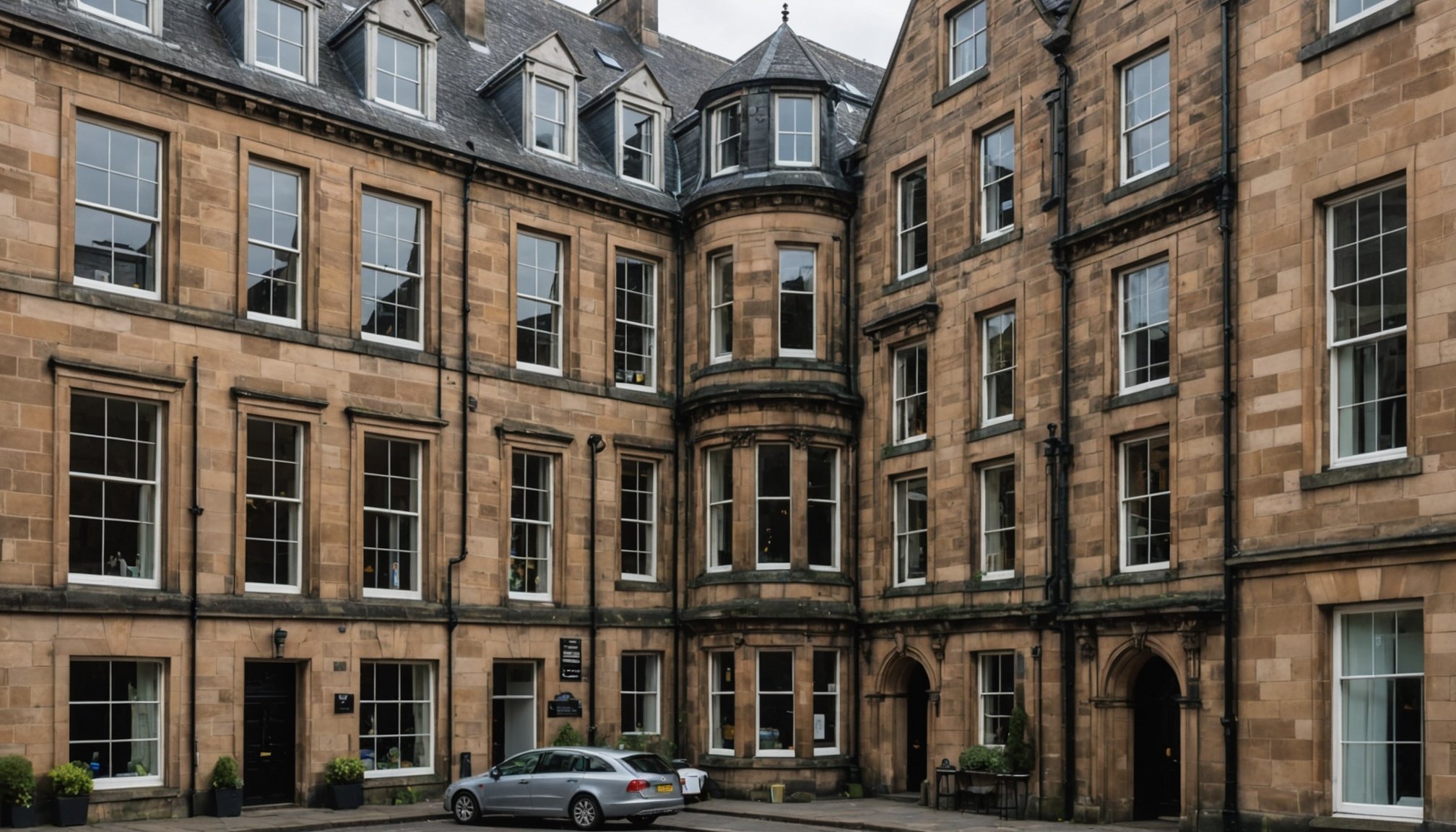Overview of Insurance Challenges for Distinctive Architectural Treasures
Distinctive architectural treasures are structures with unique design, historical relevance, or cultural significance that set them apart from conventional buildings. These treasures, such as those found in cities like Edinburgh, often face a myriad of insurance challenges, primarily due to their intricate architectural and historical features.
Insuring such unique properties presents issues chiefly because these buildings require specialized assessments to understand their distinct risks. Unlike standard properties, the materials and craftsmanship are often antiquated, making repairs and restorations costly. Therefore, insurers must meticulously evaluate potential risks, including weather-related damages, fires, and other incidents, that could compromise the integrity of these architectural treasures.
A voir aussi : How Recent Flood Plain Reclassifications Influence Property Insurance Costs in Somerset
In Edinburgh and similar locales, understanding the specific challenges faced by heritage buildings is crucial. The insurance challenges not only involve the financial aspects of coverage but also the conservation requirements to maintain the building’s historical value. Additionally, insurers often need to collaborate with conservationists to ensure that any repair work respects the original design and materials.
Successfully mitigating these risks calls for the development of tailored insurance products that can accommodate both the unique risks and the preservation needs of architectural treasures, allowing them to continue enriching cultural and historical landscapes.
Lire également : Navigating the Legal Landscape: Essential Guidelines for Transforming Commercial Properties into Residential Units in Glasgow
Case Studies of Distinctive Buildings in Edinburgh
Exploring Edinburgh’s historic buildings provides valuable insights into the unique insurance challenges they face. Let’s delve into case studies of three iconic structures: St. Giles’ Cathedral, The Scottish National Gallery, and The Usher Hall.
Case Study: St. Giles’ Cathedral
St. Giles’ Cathedral stands as a beacon of medieval architecture. However, retaining its historic charm poses insurance challenges. Issues such as maintaining the delicate stonework and safeguarding artefacts are paramount. A high precision approach in insurance involves comprehensive coverage for potential damage due to weathering and detailed assessments by specialists.
Case Study: The Scottish National Gallery
The Scottish National Gallery, housing invaluable art, requires specialised insurance approaches. Risks like theft and environmental damage necessitate tailor-made solutions. Insurers have learnt to accommodate the building’s historical significance while ensuring artworks are preserved. Emphasizing dedicated security measures in policies has proven pivotal.
Case Study: The Usher Hall
The Usher Hall, renowned for its acoustic excellence, faces insurance hurdles due to frequent events. Challenges particularly arise from crowd-related risks and maintaining the venue’s integrity. Insurance solutions must cover everything from structural liabilities to specialised sound equipment, evolving with the dynamic nature of event hosting.
Understanding these case studies helps improve future insurance strategies, ensuring Edinburgh’s treasures remain protected.
Expert Insights on Insurance Processes
Understanding the intricacies of insurance processes for historic properties can be challenging. The underwriting process, a vital step, evaluates the potential risks associated with insuring unique and older buildings. Insurers rely on a methodical approach, beginning with the collection of data related to the property’s age, architectural style, and previous modifications.
Key factors that insurance underwriters consider include the building’s risk assessment. This involves assessing its structural integrity, historical significance, and any unique features that might affect its vulnerability to damage. For instance, older construction materials might pose a greater risk in today’s environment, leading to higher insurance premiums.
Expert appraisals play a crucial role in determining both coverage and value. These appraisals provide accurate assessments of a property’s worth, accounting for its historical elements and replacement costs. This ensures that, in the event of a loss, policyholders receive compensation that reflects the true value of their property. Expert insights into these assessments are essential, as they guide the negotiation of appropriate coverage terms.
The combination of thorough risk assessment and expert appraisals ensures that insurance processes for historic properties are tailored to meet specific needs while safeguarding the unique characteristics of these structures.
Legal Considerations in Insuring Heritage Properties
Navigating the complex world of legal considerations is crucial when insuring heritage properties. In Edinburgh, laws governing these properties focus on protecting their cultural significance. Building conservation must be respected, ensuring heritage properties maintain their historical authenticity. This compliance impacts insurance, as providers require adherence to these regulations to offer coverage.
Local regulations involve stringent guidelines on property alterations and restorations. Owners must secure approval from relevant authorities before making changes, influencing the extent of insurance coverage possible. Nationally, heritage preservation is a priority, regulated by acts safeguarding buildings across Scotland and the UK. Insurance companies factor these legal aspects into their policies to cover potential claims authentically.
Internationally, UNESCO’s principles also affect insuring processes, as Edinburgh’s historic sites enjoy global recognition. Insurance regulations mandate policies that acknowledge international frameworks and treaties when insuring properties with world heritage status.
Compliance guarantees access to comprehensive insurance packages tailored for heritage properties. Without conforming to regulations, obtaining sufficient protection becomes challenging, risking potential inadequacies in coverage. Insurance companies value adherence to laws, reflecting this in their offerings, ensuring coverage aligns with the property’s historical and cultural importance. Understanding the legal landscape is imperative, allowing owners to make informed decisions and safeguard their assets.
Valuation and Risk Assessment for Historic Structures
Valuing historic structures requires a distinct approach due to their unique properties. Traditional valuation methods often fall short when applied to these buildings due to their unique architectural features and historical significance, which do not typically align with modern construction values. Instead, a specialised valuation method needs to consider the rarity and replacement costs of materials and the cultural worth attached to the structure.
A major challenge in the insurance market is accurately assessing the risk of such properties. Historic structures often face unique risks like structural vulnerabilities, natural disasters, or even regulatory challenges, given their protected status. These factors necessitate a tailored risk assessment focusing on the distinct threats to historic buildings. Comprehensive assessments are essential for crafting effective preservation strategies and ensuring appropriate insurance coverage.
Moreover, common pitfalls in valuing these structures stem from underestimating restoration costs or ignoring potential regulatory constraints. To overcome these pitfalls, it is crucial to involve experts familiar with historic preservation and the local legal framework governing such properties. By adopting specialised methods and conducting thorough risk assessments, property owners can ensure these irreplaceable structures are both properly valued and protected against unforeseen risks, securing them for future generations.
Coverage Options and Solutions for Property Owners
Understanding the various coverage options available is crucial for property owners looking to safeguard their investments. With a plethora of insurance solutions, tailored products specifically designed for heritage structures offer significant protection. These products allow owners to cover damages while also preserving the historic value of their properties.
To navigate the complex landscape of insurance, property owners should first assess the specific needs of their structures. This involves evaluating unique risks like age-related vulnerabilities and compliance with preservation guidelines. Armed with this information, owners are better equipped to select insurance solutions that provide comprehensive coverage.
Strategies for mitigating risks include regular maintenance and the installation of modern protective systems. These actions can reduce the likelihood of claims and potentially lower insurance premiums. Seeking expert recommendations can also be beneficial. Professionals with experience in heritage properties can guide owners toward the most effective strategies and coverage options.
Finally, it is essential to understand how insurance solutions address various scenarios, from fire and water damage to vandalism. Adequate coverage ensures that property owners are not left financially vulnerable. By staying informed and proactive, property owners can enjoy peace of mind, knowing their prized heritage structures are well-protected.
Preservation Regulations and Their Impact on Insurance
Preservation regulations play a crucial role in shaping insurance policies for properties with heritage status. These regulations often dictate terms that significantly impact both insurance costs and coverage options. For instance, structures with heritage status may require specific materials for restoration, which can escalate repair costs. This increased expense generally leads to higher insurance premiums, reflective of the potential risk and cost insurers may incur.
Heritage status affects not just the financial aspect but also the scope of insurance coverage. Insurers typically scrutinise these properties closely, taking into account the unique requirements mandated by preservation regulations. This often translates into more restrictive coverage terms, as insurers try to balance the potential liabilities associated with preserving such properties.
Balancing preservation efforts with property insurance needs requires a nuanced approach. While the preservation of architectural heritage is invaluable, it is equally important to ensure that these properties are insurable and sustainable in the long term. Property owners can engage with specialists to understand how to meet preservation regulations without jeopardising their insurance needs.
Overall, the influence of preservation regulations on insurance policies is substantial, necessitating a careful evaluation of the costs, risks, and requirements involved in maintaining heritage properties.
Practical Tips for Property Owners in Edinburgh
Owning property in Edinburgh presents unique challenges, particularly when dealing with the city’s distinctive buildings. Ensuring you have the right insurance is crucial, and there are practical tips property owners can follow to streamline this process.
Before seeking insurance, it’s essential to conduct a thorough property assessment. This involves identifying potential structural weaknesses and distinguishing architectural features. Address any maintenance issues, such as dampness or outdated electrical systems, to improve safety and equity.
To maintain and protect these unique structures, engage professional services for regular inspections. Edinburgh’s climate can be harsh, so frequent checks of roofing and masonry help prevent larger issues. Implementing these recommended practices not only safeguards your investment but also maintains property value.
There are numerous resources available for property owners in the city. Local heritage organizations offer guidance and support tailored to Edinburgh’s architectural landscape. Additionally, governmental bodies provide information on grants available for preservation and maintenance work, which can offset costs.
Networking with fellow property owners through community associations can also provide invaluable insights. These forums often discuss insurance offers and maintenance strategies, enhancing collective knowledge. Access to these support networks ensures you are well-positioned to make informed decisions and secure comprehensive coverage.











